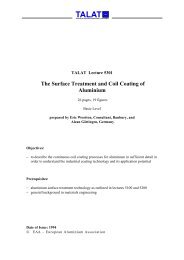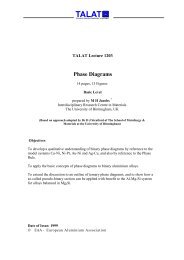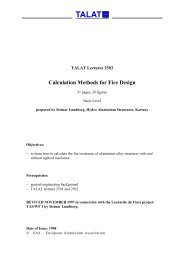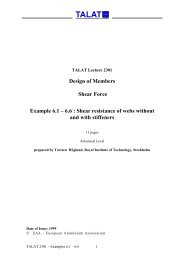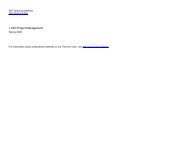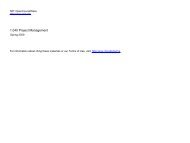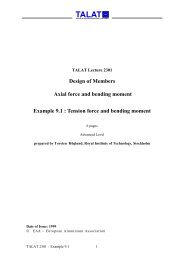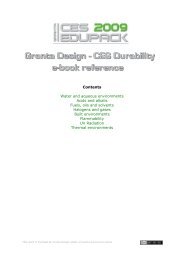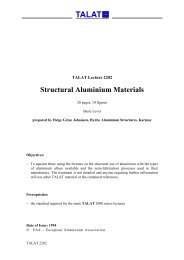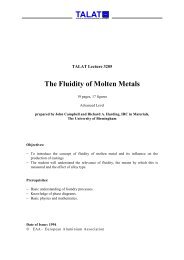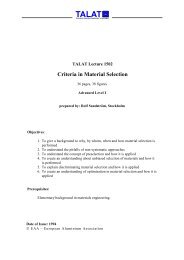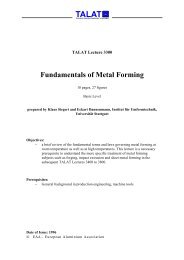Formability Characteristics of Aluminium Sheet - CORE-Materials
Formability Characteristics of Aluminium Sheet - CORE-Materials
Formability Characteristics of Aluminium Sheet - CORE-Materials
You also want an ePaper? Increase the reach of your titles
YUMPU automatically turns print PDFs into web optimized ePapers that Google loves.
deep drawability T in %<br />
30<br />
25<br />
20<br />
15<br />
10<br />
5<br />
0<br />
Source: IfU - Stuttgart<br />
Deep drawability under different<br />
boundary conditions<br />
alu<br />
Training in <strong>Aluminium</strong> Application Technologies<br />
19.7<br />
24.3<br />
TALAT 3701 24<br />
d 0 = 100 mm; β0 = 2.0<br />
M100 drawing foil<br />
15.5<br />
25.8<br />
EN AW - 5182 w EN AW - 6016-T4<br />
<strong>Sheet</strong> Material<br />
Deep Drawability Under Different Boundary Conditions 3701.03.10<br />
Creating the Forming Limit Diagram (FLD)<br />
With the help <strong>of</strong> Forming Limit Diagrams it is possible to determine the limiting<br />
deformations, e.g. necking and tearing, which eventually lead to failure. This chart<br />
utilises the line grid deformation analysis to measure the forming properties <strong>of</strong> sheets.<br />
The line grid deformation analysis is based on the assumption that sheet materials fail<br />
due to necking or rupture which is a result only <strong>of</strong> a plane state <strong>of</strong> stress being reflected<br />
in a local measurable deformation. In order to be able to determine the local deformation<br />
<strong>of</strong> the formed sheet, line patterns with defined geometries (e.g. circles, grids) are marked<br />
on the sheet specimens prior to forming. The subsequent forming process causes the line<br />
patterns to deform by an amount which depends on the local deformation experienced<br />
by the sheet part. The distortions in the line patterns are measured and evaluated to<br />
deliver information about the local deformation in widths.<br />
The deformation in thickness can be derived using the law <strong>of</strong> volume constancy and the<br />
resulting correlation:<br />
ϕ1 + ϕ2 + ϕ3 = 0<br />
A number <strong>of</strong> methods are available for marking line patterns on sheet specimens, some<br />
<strong>of</strong> which are engraving, printing (silk-screen process, <strong>of</strong>fset printing), photochemical or<br />
electrochemical marking. While choosing the appropriate process, care should be taken<br />
that the chosen process does not influence the forming, which e.g., would be the case in<br />
too deeply engraved patterns with accompanying notch effects. The pattern must also be<br />
able to resist the influences <strong>of</strong> the forming process, like friction or lubricants. Further, it<br />
should be possible to apply the marking with as little effort as possible. The<br />
electrochemical method is very <strong>of</strong>ten chosen. In this method, a textile stencil, in which



